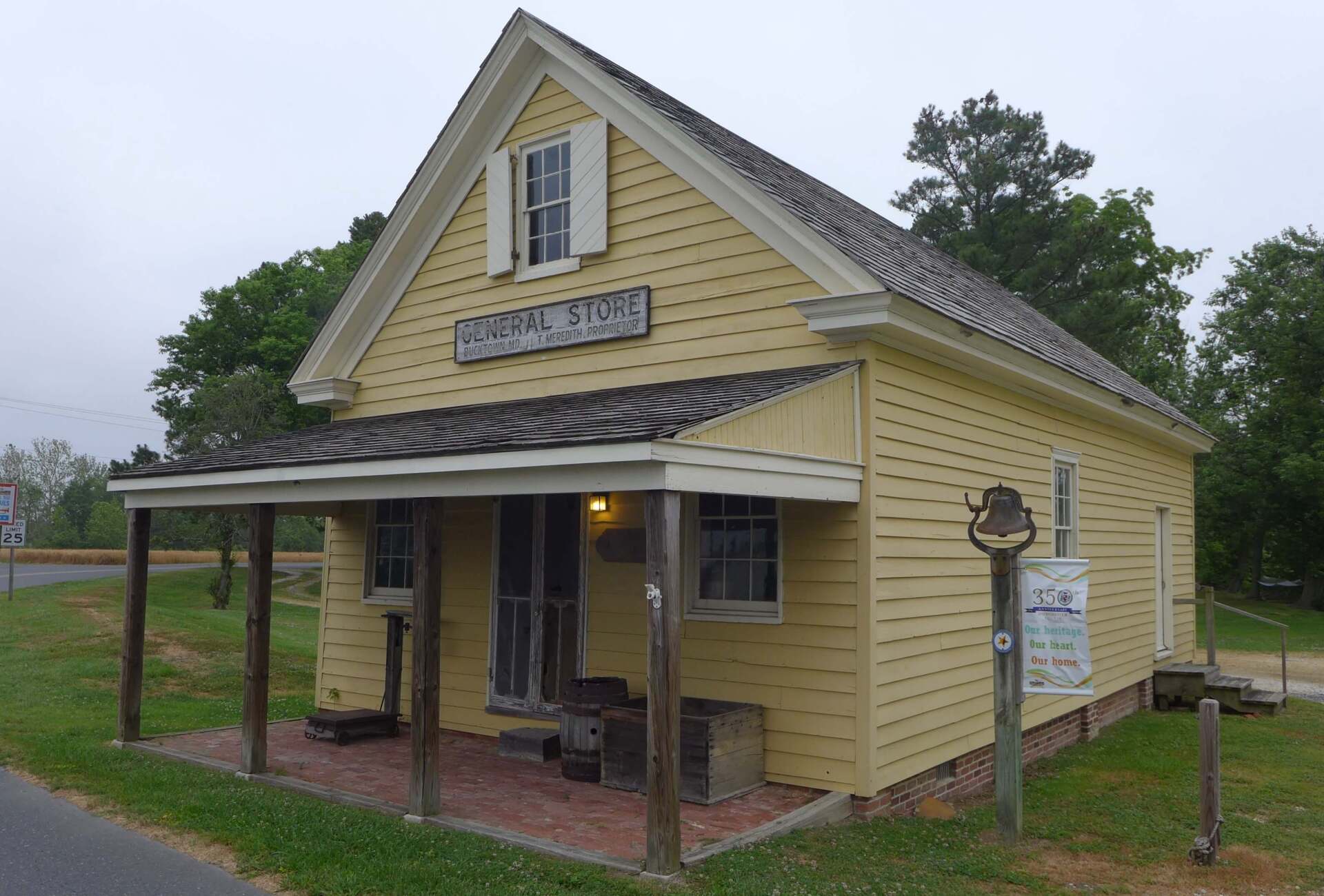Historic Harriet Tubman Sites at Risk of Rising Seas on Eastern Shore
A new study shows many of Maryland’s most significant sites from Harriet Tubman’s life a re in jeopardy of chronic flooding as sea level rise threatens the Eastern Shore.
Such as Long Wharf, now a park on the water’s edge of Cambridge, which once served as a hub for the trans-Atlantic slave trade. Stewart’s Canal, a seven-mile logging waterway dug by enslaved and free Black people. And the Bucktown General Store, where a young
Tubman sustained a brutal head injury.
“This is African American heritage and history in this area,” said Green. “I’ve done tours where people just cry.”
Green is well aware that rising seas are affecting communities like his. The seas are rising faster along the mid-Atlantic than in most parts of the world.
It’s not just threatening communities, roadways, and buildings. In this section of coast, it’s threatening historical Tubman treasures.
The science and news group Climate Central analyzed 45 sites along the byway, from Maryland to Delaware, and found 16 of the sites will experience significant flood risk by 2050; 25 of them face such threats by century's end. The report singles out 10 significant places around Dorchester County as likely to face occasional, frequent, or chronic risk of flooding this century.
“It's entirely possible that some of the sites are going to be so badly flooded that they really won't be very accessible to the public anymore,” said Karen Florini, Climate Central’s vice president for programs, adding: “The main message is that climate change is real, it is serious.”
Of some of the threatened sites: Though about a quarter of Long Wharf Park is already at chronic risk of flooding, the report projects 80% of the area will be at chronic risk by 2050.
The marshes at Stewart’s Canal are already experiencing chronic flooding, too. Climate Central found much of the land around the canal will fall below the high tide line before 2050 and the road leading to it could be at chronic flood risk by the end of this century.
The study also warns the historic Malone’s Methodist Episcopal Church — founded by free and enslaved Black people in the 1860s — and its nearby cemetery could see almost monthly flooding by 2050. There is often standing water underneath the church, even on a sunny day.
“I'm hoping that when we talk about it and people hear us talk about it, they start to realize this is for real,” said Herschel Johnson, a local Tubman historian, of the risk of rising seas to the byway.
Johnson said it’s not just a crucial part of American history at stake, but a key part of the local economy. He said Tubman, the most famous conductor on the Underground Railroad, helps fuel Dorchester County tourism.
The rising water is already posing challenges for archaeologists searching to uncover more of Tubman’s history.
A team of archaeologists from the Maryland Department of Transportation have been searching federal wetlands since last fall for evidence of her father’s cabin. They’re also digging on nearby private land for the site they believe could be Tubman’s birthplace.
This area “was never very dry, but it has never been as wet as it is today,” said Julie Schablitsky, the chief archaeologist for MDOT’s State Highway Administration. “Because of that, we're in a bit of a race against time to try and rescue these sites.”
Schablitsky, whose team recently finished a two-week stint digging in the Blackwater National Wildlife Refuge, points to a collection of nails, fasteners, and brick indicative of an old home site — clues that the scientists could be getting closer to confirming the location of Ben Ross’s homestead.
Her team spent weeks sifting through the brackish muck to locate tiny bits of plates, cups, bowls, and other housewares, which the scientists will now analyze in their laboratory.
“As we dig deeper, things usually get older,” she said. “So it's important that we don't have water coming up into our site because, once that happens, it literally muddies the picture.”
Schablitzsky said rising seas don’t just make it harder to identify artifacts, but harder to access the sites themselves. The current sites are located off of long dirt and gravel roads in flooded woodlands.
“We are in a bit of a rush against time because, even certain times of the year when I'm out here, I can't always access the site,” Schablitsky said.
The U.S. Fish and Wildlife Service acquired the property last fall — part of an effort to preserve the land as well as its potential Tubman history, said Matt Whitbeck, supervisory wildlife biologist for the Chesapeake Marshlands National Wildlife Refuge Complex.
But he warned this area will eventually become an island as the seas rise. Data from the longest-operating tide gauge in the area, located on the opposite side of the Chesapeake, shows tides are already pushing roughly a foot higher than they did 80 years ago.
“Blackwater National Wildlife Refuge is a bit of a poster child for the impacts of sea level rise and climate change,” said Whitbeck, adding the area has already seen over 5,000 acres of tidal marsh convert to open water.
As evidence of the change, he said visitors who travel the refuge’s Wildlife Drive can look to the south and see a vast area of open water.
“It's beautiful,” he said. But if you understand that, in the ‘30s, when the refuge was established, that was all tidal marsh habitat that's been lost to sea level rise and subsidence, it's shocking.”
The encroaching saltwater kills the trees in this area where Tubman led people on their journey to freedom, turning lush landscapes into “ghost forests” of brittle, hollowed out trees.
Green, the tour guide, said people sometimes notice the skeletal trees dotting much of southern Dorchester County. He said he explains saltwater intrusion to them and how it has worsened over the past few decades.
The trees help tell a greater story about what is at risk because of climate change, he said — a conversation he hopes will fuel more efforts to slow the damage and save what’s possible.
“There's so much information that has been left out of history that we should try to preserve what we have here now,” Green said.
To read the complete report, including flood risk analyses for all identified sites, please click here for a downloadable PDF.
Climate Central is an independent, non-profit organization of leading scientists and journalists researching and reporting the facts about our changing climate and its impact on the public. Climate Central surveys and conducts scientific research on climate change and informs the publicof key findings. Our scientists publish and our journalists report on climate science, energy, sea level rise, wildfires, drought, and related topics.
This story was produced through a partnership between Climate Central and NBC4 in Washington, D.C.
Common Sense for the Eastern Shore











